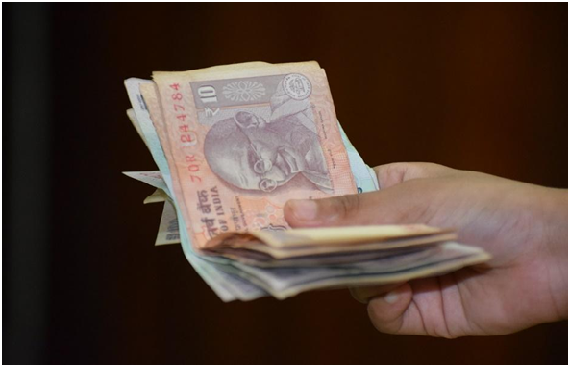India's Economic Recovery And The Impact It Is Having On Stocks and Crypto

The Indian economy is slowly awakening from the deepest recession felt so far amongst all major economies. The economy of the South Asia country is the world's fifth-largest by nominal GDP. India's developing economy has been in extremely turbulent waters, shrinking by 23.9 percent in three months in June contrasted to last year's performance. It is one of the worst contractions of any other economy during the COVID-19 pandemic period.
Compared to last year's performance, investments fell by 47 percent while household consumption slumped by 27 percent. Nevertheless, there has been an increase of 16 percent in government spending. This economic activity however has not been robust enough to offset the massive decline in manufacturing and investment sectors. Consequently, India's perennial inflation challenges have escalated, pushing more of its citizens towards learning how to trade Bitcoin.
The Indian government has hinted that it will allow the rupee to gain more strength in the race to master imported inflation. The Indian Rupee's value has been on the rise as the economy staggers. In the past, the instability of the Rupee made cryptocurrencies a valuable method of converting their cash into stable currencies.
Cryptocurrencies Lower Remittance Costs in India
The nation's cryptocurrency market has gained a market share as per industry reports because of the rupee's value of instability and a need for affordable remittances. As an illustration, the World Bank forecasted that remittances to India would fall by 23 percent, during the lockdown period. The average Indian family reliant on a family working abroad has to find affordable money transfer services as well as the highest value for exchange for the foreign currency sent back home.
Legacy digital payment platforms charge close to $10 for each $200 sent to India. With close to 17 million Indians living abroad, cryptocurrencies, especially bitcoin, have become a staple cross-border payments of assets.
They have helped to cut down on the high cost of remittance fees. Trading volumes on Indian peer-to-peer platforms such as Paxful and LocalBitcoins have ballooned as Indians convert their rupees to Bitcoin and back to US dollars to hedge against the growing inflation.
The Indian population has a strong demand for the dollar, but their financial system strictly regulates foreign exchange. It makes conversion from the rupee straight to the US dollar an arduous undertaking. Bitcoin trading however makes this process much easier.
They also exchange the cryptocurrencies through popular chat groups such as Facebook Messenger, WhatsApp, and Telegram. Bitcoin maintains value during currency conversions. Fortunately, India's central bank has reiterated that it has not banned crypto trading exchanges or businesses, increasing trading volumes in all crypto exchanges.
Economic Recovery on a Slow but Sure Pace
India's attempts to reopen their economy ran aground in late June as coronavirus cases surged in tandem with the reopening. New virus hotspots emerged all over the populous countryside, with containment measures failing. Nevertheless, rural India has cushioned the domestic demand downside, leading to the country's recovery.
The farm sector's performance has been a silver lining in the doom and gloom growing by 3.4 percent in June's quarter. Benefitting from higher than usual monsoon rains and improved accessibility to water via irrigation reservoirs, agriculture growth has been robust.
Vahan data shows that the auto industry has been massively hit by the pandemic as well. The sale of goods vehicles has drastically declined. This segment is performing worse than any other vehicle sales sector. Motor vehicle sales data is a leading key performance indicator of the level of consumption. The sale of automobiles is also a large taxation source for the government. Besides, the vehicle manufacturing industry is the largest source of employment amongst industries, a major source of household livelihood.
Fortunately, data shows that India's economic engines are heating up once more as the automobile sector roars back to life. It is a slow pace back, and the momentum is weak, but it is nevertheless a good sign of recovery. That said, the recovery picture is still gloomy and uncertain.
As an illustration, Moody’s has projected an economic contraction value of 11.5 percent to India's economic growth. Citing the country's challenges of a weak fiscal system, debt burden and low growth, the bond credit rating service warns that any deeper stress to the system could lead to catastrophic erosion of fiscal strength.
"Mutually reinforcing risks from deeper stresses in the economy and financial system could lead to more severe and prolonged erosion in fiscal strength, exerting further pressure on the credit profile," Moody's said.
The good news is that the Indian economy could rebound to a level of 10.6 percent in 2021 as per Moody's and Fitch Ratings. Morgan Stanley has projected a 9.5 percent bounce in 2021.


.jpg)
.jpg)